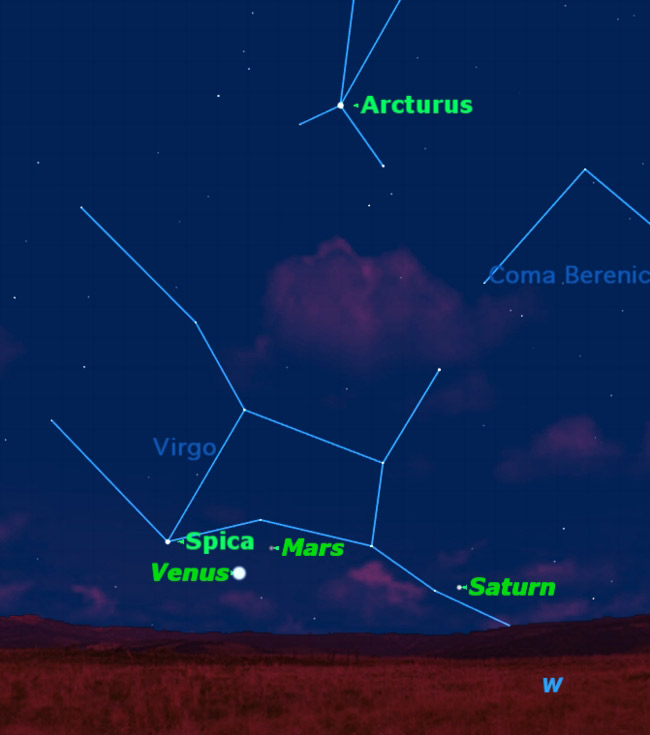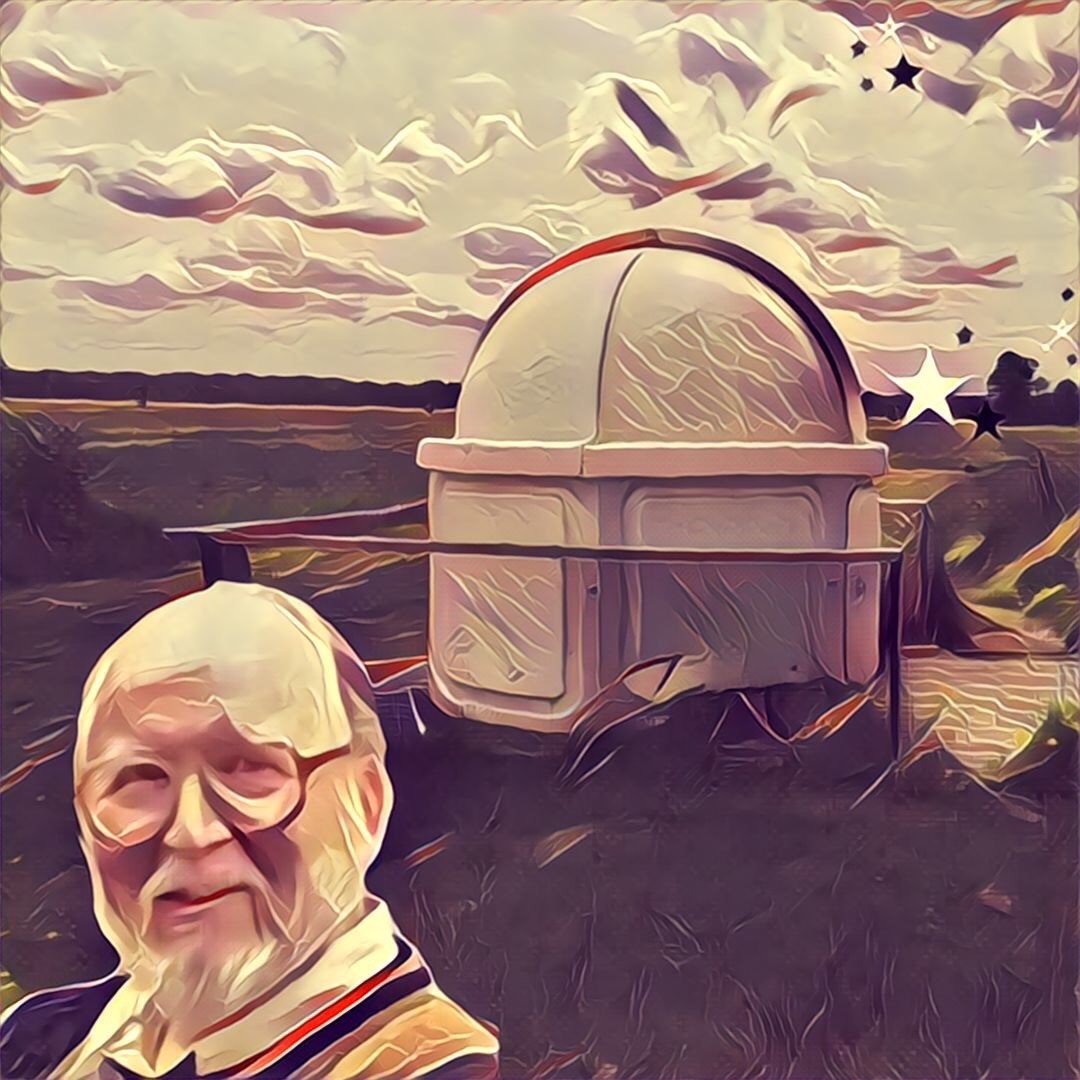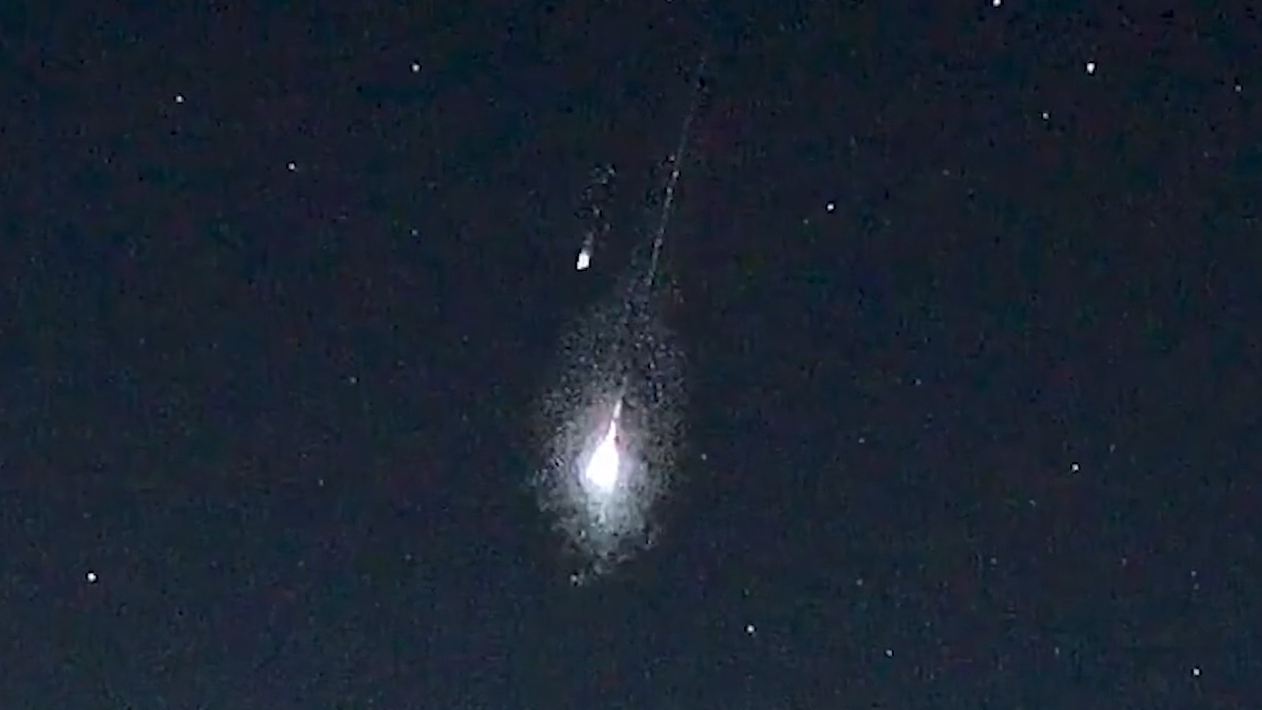You Can Catch a Crescent Venus in Telescopes

If you look low in the western sky just after sunset, you will see three planets in an irregular row: from left to right, Venus, Mars and Saturn. Venus is the brightest of the three and, with the use of a telescope or binoculars, appears as a narrowing crescent.
Venus was at its greatest elongation — its farthest distance from the sun — on Aug. 20. Now it’s rounding the sun and getting closer to Earth. [Photos: Venus Crosses the Sun]
Astronomers use a magnitude scale to measure the brightness of objects in the sky, with larger numbers indicating fainter objects. The brightest objects in the sky are magnitude 1 or less; the faintest objects that can be seen with the naked eye are magnitude 6.
Currently, Venus shines bright at a magnitude –4.4, with Saturn at magnitude 1.0 and Mars slightly fainter at magnitude 1.5.
This sky map shows where to look to spot all three planets tonight, weather permitting.
Just to the left of Venus is the star Spica in the constellation Virgo, like Saturn magnitude 1.0. Riding high above all four is the brighter star Arcturus in Bootes, magnitude –0.1.
Crescent Venus
Breaking space news, the latest updates on rocket launches, skywatching events and more!
Because Venus is lit by the sun from behind, its crescent shape, as seen in a telescope or binoculars, is getting narrower, like a waning crescent moon, as it moves in front of the sun. Any telescope will show the crescent shape, and it is even visible through binoculars.
In this part of Venus' orbit, the view does a balancing act between the planet's decreasing distance from the Earth (which makes it look brighter) and the decreasing width of its crescent (which makes it fainter). The two balance out Sept. 23, when Venus will be its brightest of this year, magnitude –4.6. The planet will then start to drop ever closer to the sun, passing between Earth and the sun on Oct. 29.
Venus will pass just south of the sun at this time. But Venus will pass directly in front of the sun on June 5, 2012. This transit of Venus last occurred June 8, 2004, and won’t happen again until December 2117.
Moving planets in space
Returning to the view tonight, after the three planets in the west have set, turn around and face the east: You will see the moon rising, one day past full, shortly followed by the planet Jupiter to its left.
So, just as three planets exit stage right, a new planet enters stage left.
If you miss these events tonight, try again tomorrow night, but don’t delay any further, as the planets move on without any regard for human observers.
If you’ve been following the movements of the planets over the last few weeks, you will have seen Mars, Saturn and Venus shift from a tight triangle on Aug. 5 — with Mars and Saturn to the left of Venus — to an Aug. 10 arrangement with Venus in the middle.
Mars and Venus were closest, less than 2 degrees apart, on Aug. 18, and have now drawn apart so that the three planets appear in an irregular line. This is about as close as planets ever get to aligning in real life.
For observers in the Northern Hemisphere, Saturn is now getting perilously close to the sun and will soon be lost, reappearing at dawn in November.
- Photos — Venus Crosses the Sun, Part 2
- Telescopes for Beginners
- See Jupiter and the Moon: 6 Degrees of Separation
This article was provided to SPACE.com by Starry Night Education, the leader in space science curriculum solutions.
Join our Space Forums to keep talking space on the latest missions, night sky and more! And if you have a news tip, correction or comment, let us know at: community@space.com.

Geoff Gaherty was Space.com's Night Sky columnist and in partnership with Starry Night software and a dedicated amateur astronomer who sought to share the wonders of the night sky with the world. Based in Canada, Geoff studied mathematics and physics at McGill University and earned a Ph.D. in anthropology from the University of Toronto, all while pursuing a passion for the night sky and serving as an astronomy communicator. He credited a partial solar eclipse observed in 1946 (at age 5) and his 1957 sighting of the Comet Arend-Roland as a teenager for sparking his interest in amateur astronomy. In 2008, Geoff won the Chant Medal from the Royal Astronomical Society of Canada, an award given to a Canadian amateur astronomer in recognition of their lifetime achievements. Sadly, Geoff passed away July 7, 2016 due to complications from a kidney transplant, but his legacy continues at Starry Night.
